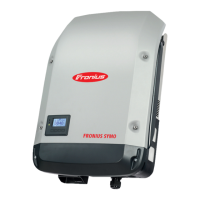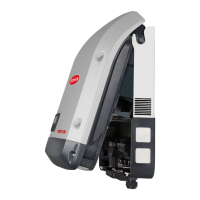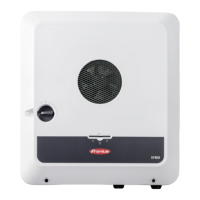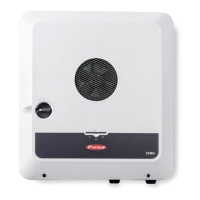7
EN
When designing the photovoltaic system, ensure that all components are operated within
their permitted operating ranges at all times.
Observe all the measures recommended by the solar module manufacturer to ensure that
the solar module retains its properties in the long term.
Obey the regulations of the power supply company regarding connection methods and en-
ergy fed into the grid.
Inverter installa-
tion location
The inverter is suitable for installation indoors.
The inverter is suitable for installation outdoors.
Its IP 65 degree of protection means that the inverter is resistant to water
jets from any direction and can also be used in damp environments.
In order to minimise the heating up of the inverter, do not expose it to di-
rect insolation. Install the inverter in a protected location, e.g. in the vicin-
ity of the solar modules or beneath the eaves.
U
DCmax
at an altitude of:
0 to 2000 m = 1000 V
2000 to 2500 m = 900 V
2500 to 3000 m = 815 V
3000 to 3400 m = 750 V
IMPORTANT! The inverter must not be installed or used at altitudes
above 3400 m.
Do not install the inverter in:
- areas where ammonia, corrosive vapours, acids or salts are present
(e.g. fertiliser stores, ventilation openings from cattle sheds, chemi-
cal plants, tanneries, etc.)
As the inverter generates low levels of noise under certain operating con-
ditions, it should not be installed close to living areas.
Do not install the inverter in:
- places where there is an increased risk of damage from farm ani-
mals (horses, cattle, sheep, pigs, etc.)
- stables or adjoining areas
- storage areas for hay, straw, chaff, animal feed, fertilisers, etc.
IP 65
2000 m
2000 m
2500 m
UDCmax =
1000 V
U
DCmax =
900 V
3000 m
2500 m
3000 m
3400 m
UDCmax =
815 V
U
DCmax =
750 V
> 3400 m
NH
3

